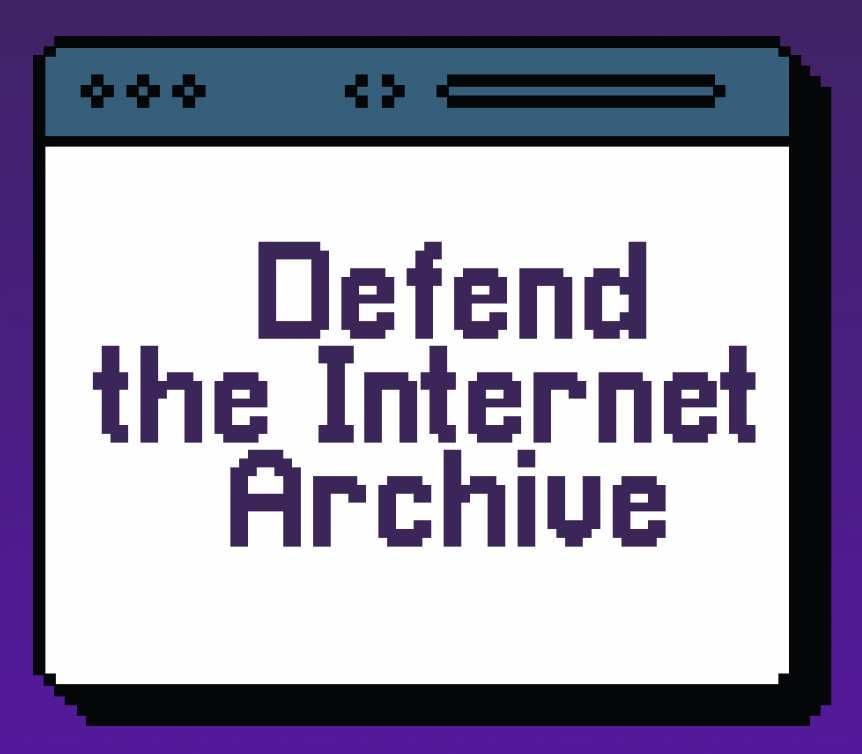The toddler loves having Kodi full of all their faves but I haven’t been able to iron out all the buffering I’m getting streaming from my mini-pc NFS mounted shares to the pi4 libreelec hooked up via Ethernet in the living room. Everything is wired, so I wouldn’t think that would be an issue but here I am about to put down a couple hundred dollars for a Synology router that looks like the monolith from 2001. Is this going to do the trick, you think? Is there another router recommended to keep a distributed little homelab (any 10tb spread between various usb hdd, raspberry pi’s and mini PCs all hosting a variety of containers and services) running smoothly? Budget I’m hoping to keep under 300 and lower the better but happy toddler and buttery smooth streaming over lan is the priority.
I’m not sure about how this works in kodi but in jellyfin the client might request a different resolution which causes the server to try and reencode the provided file on the fly. In my case my server isn’t fast enough for this which leads to constant buffering
Likely, This is it. It transcodes and hence it has to buffer because the server isn’t strong enough. Best is to use a gpu like intel a380 as described in jellyfin’s doc.
No no transcoding happening on kodi, it’s just playing it straight over the lan. That said I do have jellyfin set up on a machine that can handle transcoding for a number of clients. I gave considered switching to Kodi +Jellyfin and seeing if that’s better.
Installing the Jellyfin add on into kodi takes a few minutes. Nothing much to consider, just try it and see if that changes anything.
I have a similar setup (rpi with OSMC, media hosted on file server) and prefer using Jellyfin as the source for all clients, as it keeps track of watched status across everything. It’s not perfect, but better than without Jellyfin.
I havent used kodi in a long time, since swapping to jellyfin. I personally found kodi would always buffer sometimes, far more than it should ever need to. With jellyfin, same server, no buffer
There’s no backend server to do the transcoding in this case. Kodi can access raw NFS/SMB file shares the same as accessing local storage, so it’s just reading the file over the network, the same as if you were playing it in VLC on your PC.
Kodi doesn’t do any transcoding. It just mounts the NFS share and plays the file.
Leave Kodi behind in 2010 and switch over to Jellyfin for better results.
That’s the correct answer.
All that kodi hassle killed my brain. Nowadays I have a jellyfin server and a wifi6 router streams everything to a roku device I bought for 11€. Never saw some buffering again.
EASY KILLER
I DON’T SEE ANY JELLYFIN DISTROS
“JUST ENOUGH OS FOR JELLYFIN?” no
Though jellyfin/emby as the back end works really well
Kodi/LibreELEC is awesome for all the different stuff you can add in
EDIT for typos
Kodi/LibreELEC + JellyCon add-on works great!
You can install it anywhere. You just run the container with you media directories passed though. They have lots of documentation
It is way easier than Kodi
Oh yeah I am on board with jellyfin and emby all the way 100%
Kodi/LibreELEC is just the full suite, especially with home assistant. Use the addon and enjoy one interface for every single piece of media, cutting out each apps “eye candy” and clutter, and enjoy your tunes with visualizers!
Add-ons for everything
Moonlight for game streaming, tied into my whole home remote control and home assistant for ease of use for everyone in the family.
It’s all pretty slick.
Once you get it setup just make a backup and roll that out on the other machines needed.
FWIW I have jellyfin as well already, it’s also on the machine serving the nfs shares. I would expect streaming over lan to always be a lighter load then sending a transcoding request through the internet and back to the machine four feet away, but I could be wrong. I am always curious though what people are using as jellyfin clients for their TVs. How are you actually getting jellyfin into your living room? I had hoped to use a dedicated pi4, and I’ve already gone down the route of trying to boot to a light desktop with an auto loading chrome kiosk window to my jellyfin server, but those results were less than ideal too.
Why would your Jellyfin traffic need to go over the Internet if it’s on your local network? You should be able to install the Jellyfin app on your smart TV/Roku/etc or use the web client from a computer, point it at the Jellyfin local IP address, and view it over your LAN.
And at best reroute the traffic before going outside
Yeah, a lot of routers support custom DNS routes, so just set your device to use your router for DNS and set routes to forward traffic to your NAS. Boom, problem solved and you still get to use HTTPS inside your house.
There are dedicated Jellyfin clients but I mainly just use the web client that is part of the server 90% of the time.
I use Chromecast to watch jellyfin on my TV. My host PC is hardwired, and obviously the Chromecast is through WiFi
I use the Jellyfin for Kodi addon. It’s quite easy to set up and it sounds like you pretty much have everything you need already. Not sure if it could fix your issue but it works great for me.
Transcoding reduces bandwidth usage significantly
Also video traffic doesn’t pull that much by todays standards
Before you buy anything, put some of the same content that buffers on a USB stick or powered drive and play it directly from the pi4. Also connect via ethernet to your router from another PC and check your dl speed from the NFS share.
Oh brilliant. Thanks. Yes. This only tends to happen on larger files, 5gb mkvs or multi audio track deals etc. I was also concerned it’s just a pi4 bottleneck, but that’s fixable too with more hardware. Just need to figure out what to get.
I’d lean towards the pi being the problem, but you can test the network throughput with iperf, and would want to test the videos outside of Kodi on the pi, so you could also check top and see what the processing looks like.
If I remember my pi 4 hardware decoding specs correctly, I believe h.264, MPEG 2, and VC1, and some support for HEVC. If I had to guess, you may have some codecs that aren’t handled by hardware acceleration, and instead just CPU.
My best rec would be to use either a dedicated stream box (like a fire stick, Nvidia shield, etc) which has better codec support, or pick up like a little Intel n100 based system, which will handle a drastically wider set of codecs with full acceleration support.
Right now I’ve got a Roku and a Google TV Chromecast, and I’ve been trying with various environments on an old Lenovo m910q so I can find my favorite fit of UI/distro. The Roku and Chromecast never stutter, and I don’t do transcoding for inside the home. Works with 4K HDR HEVC no problem.
Edit: Autocorrect annoyances.
Thanks, really appreciate the thoughtful response. I have an intel n100 NUC actually on the network. It used to be the jellyfin machine but has shifted to other duties. I probably should have tried to throw that in and reconfigure things but I just went with the OSMC Vero box which should tick all the necessary hardware boxes to at least free that from being the problem. Bonus: I get to add the pi4 back to the homelab stack.
I gave up on kodi. Jellyfin works better, presumably because it transcodes better.
Haven’t used Kodi but am running Jellyfin via the official docker image on a Raspberry Pi 4. Even there transcoding works reasonably well for one user at a time, admittedly didn’t try with several users at the same time so far.
Just mentioning the docker image because I used to install it without docker directly via the repository and I never got transcoding to work on the same hardware.
It still transcodes it just uses the CPU
Your router doesn’t handle LAN traffic so an upgrade shouldn’t make any difference, unless you have multiple VLANs and are passing traffic between them and don’t have a Layer 3 switch in use to handle inter-VLAN routing.
I would probably start with an
iperftest for download bandwidth to the Pi from the server. If that looks OK then I would benchmark the NFS share for read speed on the Pi, make sure that’s not doing something weird.If that all looks good then I would probably suspect that Kodi either isn’t using hardware acceleration properly, or the specific media codec is not supported by the Pi for hardware acceleration.
can you run something like iperf3 or openspeedtest between the server and client to prove its a network throughput issue?
do you have a network switch you can add to avoid switching through your router (if it is indeed bad?)
Have you ensured you arent unknowingly using wifi at either end?
What quality is the content? I have a pi4 running OSMC, kode front end and things are buttery smooth. All content is 1080p or lower as the pi can’t handle 4k
Network is a 1gb switch from the mini pc running NFS and homeplugs to get the network from a bedroom to the living room.
Are you by any chance using flat Ethernet cables? Those are not to spec and are vulnerable to radio noise. Friends don’t let friends buy and use flat Ethernet cables.
Flat cables can be conformant and they still have twisted pairs. Cables just have to meet the physical properties set by the standard.
Sure they might exist but the ones you buy off of That Website never are.
Woah really?? I am actually…
Do you experience buffering if you watch on a pc / laptop on VLC via network? This will tell you if it’s network speed related or hardware power related. I would assume the pi is not quite powerful enough. I am using a device called a Vero 4k+ and it works wonderfully. But my network setup sounds similar to yours, I just have an smb share on my pc and I added it as a source in kodi.
I don’t, super helpful. So I’m guessing this is a pi bottleneck. Just ordered the Vera V so we’ll see! Fingers crossed for happy toddler.
Nice, should be a nice upgrade! Been debating getting the V for av1 support, but I’m also just holding off hoping Apple TV will support it soon.
My first thought was also that it’s a Pi bottleneck. I have a 4b, and I don’t think I would really trust it to handle some of the higher-quality streaming. Maybe just barely.
Change the baby for a dog. You’re welcome.
Instructions unclear. Baby is now a werewolf and howls loudly when Kodi is buffering.
I hear you need dark magic for that
Broth…er?
You made my wife cry
EDIT IRL
To me it looks like you don’t have enough power, either on the Pi4 side to decode, or the mini-pc to encode.
Appreciate the solicited technical advice, less so the unsolicited parenting advice, thanks! You’ll be shocked to hear that hyperbole exists, I’m sure. I’m just trying to watch the Aristocats with the kiddo without them wondering why the screen stops mid song, stranger.
There are very few things more obnoxious than an asshole with unsolicited parenting advice
Right? The absolute gall.
Removed the parental advice part. I didn’t want to be an asshole, believe me.
❤️
ADHD diagnostic in 3, 2, 1…
The Pi4 USB controller and network adapter share bandwidth. Do you have any devices on the USB port that could be causing collisions? I really can’t think of anything in that kind of scenario that would cause that sort of issue unless somehow you were using USB for video out…
That is a complex setup. What’s wrong with Jellyfin?
Also doing media streaming from a RPI is not going to work well. Go with a old minipc as they are cheaper anyway
Kodi on my 2015 Nvidia Shield doesn’t stutter for me playing back 30GB+ 4k files on a 1Gb network from an ancient (2012) AMD Athlon TrueNAS box. It could be network related, but you can test this from another machine (laptop, desktop, etc) or by using local playback on the pi. I have cheap network hardware, and have never needed better. All this is to say Kodi mounting NFS shouldn’t need much bandwidth or high end gear. Perhaps the issue is on the playback side. Good luck!
Edit:
andanThanks! Super helpful data point. I don’t have the same buffering issues streaming the same video to my desktop over nfs, so I’m leaning towards it being a pi4 bottleneck. Just plopped down for a Vera V so fingers crossed that’s the issue.
Acronyms, initialisms, abbreviations, contractions, and other phrases which expand to something larger, that I’ve seen in this thread:
Fewer Letters More Letters DNS Domain Name Service/System HTTP Hypertext Transfer Protocol, the Web HTTPS HTTP over SSL IP Internet Protocol NAS Network-Attached Storage NFS Network File System, a Unix-based file-sharing protocol known for performance and efficiency NUC Next Unit of Computing brand of Intel small computers RPi Raspberry Pi brand of SBC SBC Single-Board Computer SMB Server Message Block protocol for file and printer sharing; Windows-native SSL Secure Sockets Layer, for transparent encryption
[Thread #918 for this sub, first seen 12th Aug 2024, 12:35] [FAQ] [Full list] [Contact] [Source code]















